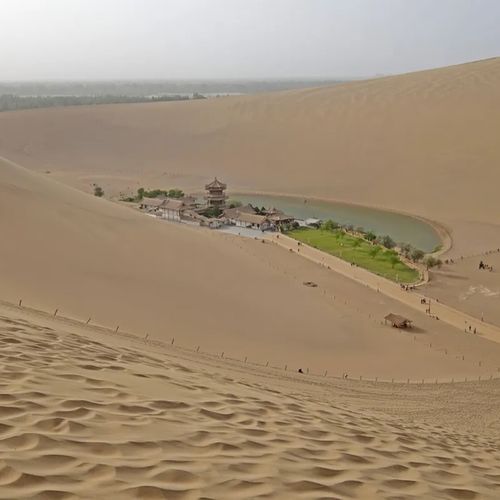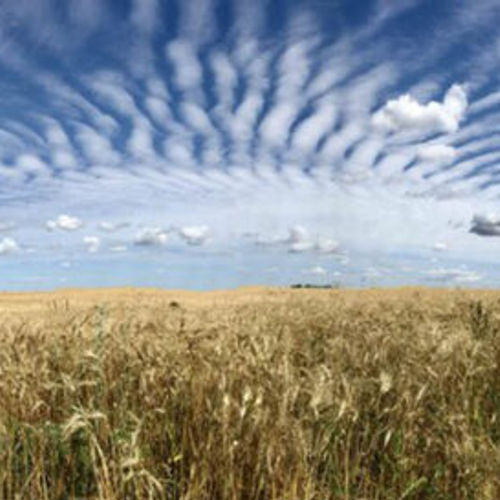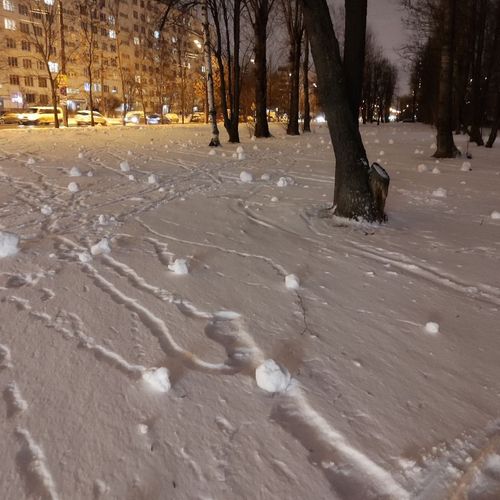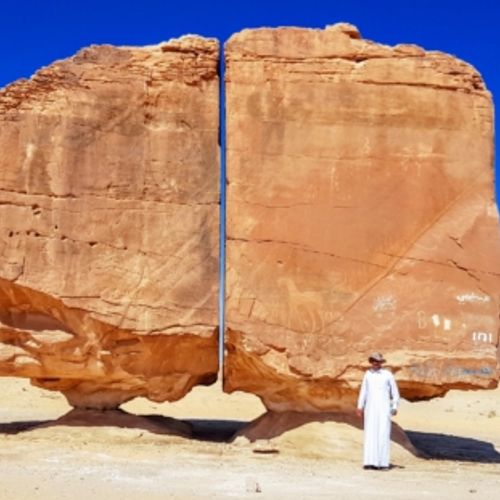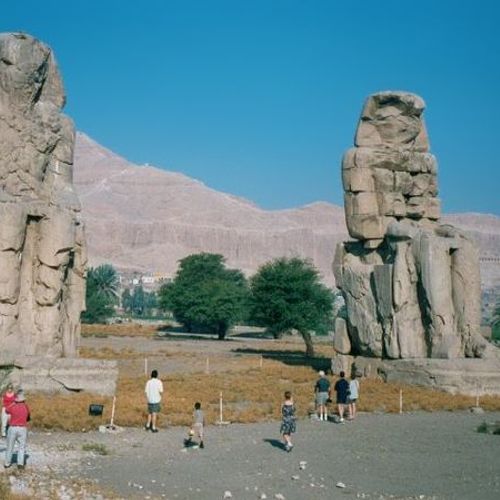
| Added | Tue, 09/11/2021 |
| Источники | |
| Дата публикации | Sun, 01/01/1978
|
| Версии |
The Colossi of Memnon (local Arabic name el-Colossat, or es-Salamat) are two massive stone statues that actually depict the Pharaoh Amenhotep III, not Memnon. For the last 3,400 years they have stood in the necropolis of the city of Thebes, on the other side of the Nile River from the modern city Luxor.
Greek historian and geographer Strabo, who lived at the beginning of the I century AD, tells of an earthquake (in 27 BC) that destroyed the northern colossus.
After splitting, the statue gained a reputation for "singing" every morning at dawn: a slight moan or whistling may have been caused by the rising temperature and evaporation of moisture inside the porous stone. In 19 A.D. , he visited these places Germanic. The tone of the sound produced by the statue throughout the ancient world was considered a reference for tuning musical instruments[4]. Legends about colossi spread all over the world, and travelers reached out to them to admire the statues.
The height of the statue is about 20 meters, the mass reaches thousands of tons. In the lower part of the colossus, a number of cracks and holes were found with chambers of complex shape located behind them.
O. Bshorr, an acoustician from Germany, observed the sounds made by the statue for a year, recorded them on a tape recorder and subjected them to spectral analysis. His speech at the Tokyo International Congress on Acoustics served as another proof of how unfair the sometimes prevailing opinion about scientists is, as about dry, callous people who are alien to everything human. When the time came for Bshorr's report on the Memnonian colossus, there was really nowhere to fall in the audience. In the neighboring auditoriums, where other sections of the congress were sitting, it was a little empty.
The speaker began by reporting that more than a hundred Greek and Latin documents from different times mention the singing of the colossus. One of the authors of the documents (Strabo) points out that the statue imitates a human voice. After the restoration of the monument by Emperor Septimius Severus in 199 AD, this ability was lost by the monument.
What did regular observations show?
In summer, the statue sounds after 5 o'clock in the morning, in winter - after 7 o'clock. The sound is melodious, lasts 1-2 hours. Undoubtedly, it is caused by the rising currents of air heated by the morning sun.
However, it was not possible to establish an exact physical picture of sound formation. More than ten different assumptions have been made on this score, such as: wind effect, Aeolian harp, Helmholtz resonator vibrations, Trevelyan effect (vibrations in contact with a heated surface), etc. It is very likely that several mechanisms of the occurrence of "singing" are acting simultaneously.
Новости со схожими версиями
Log in or register to post comments

